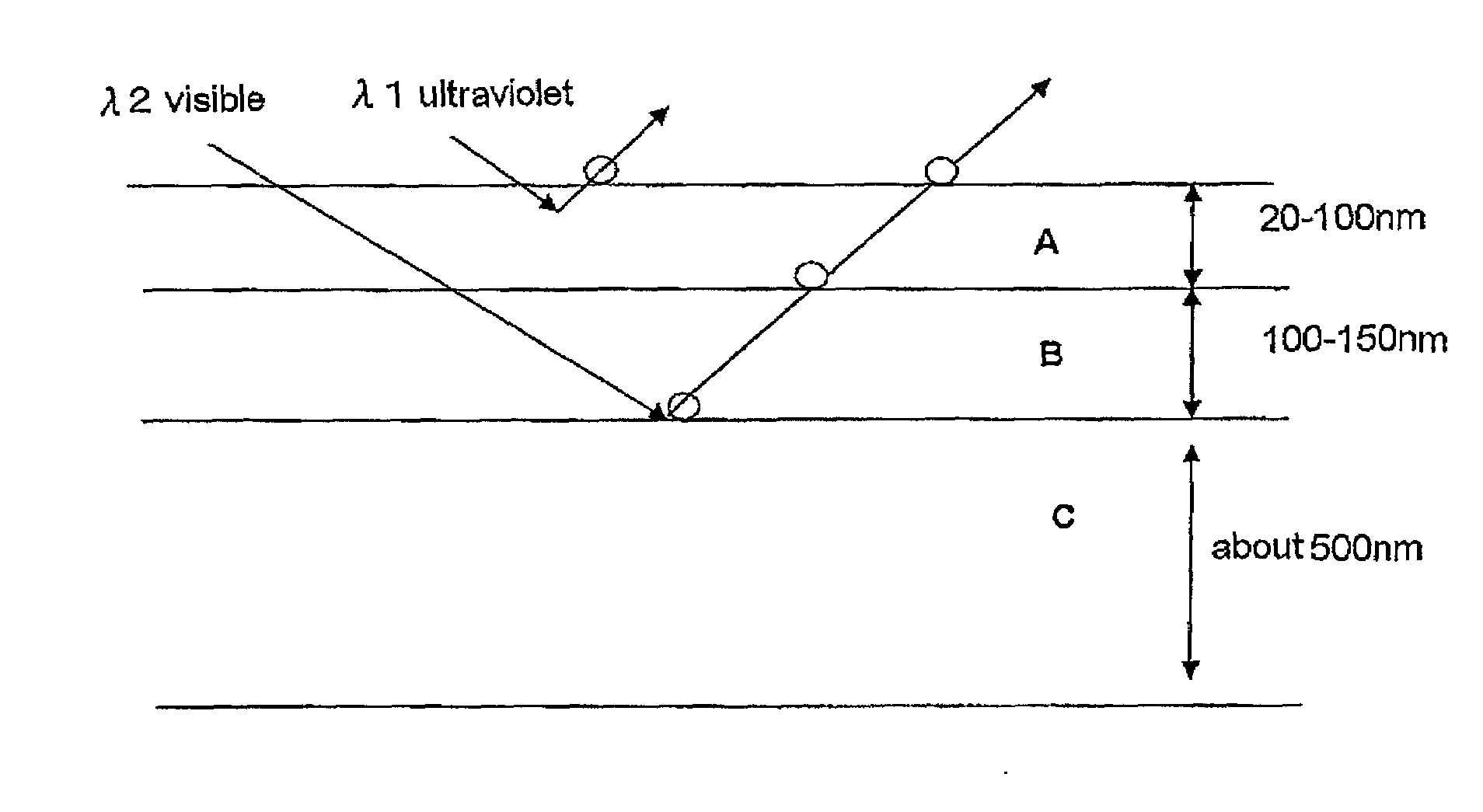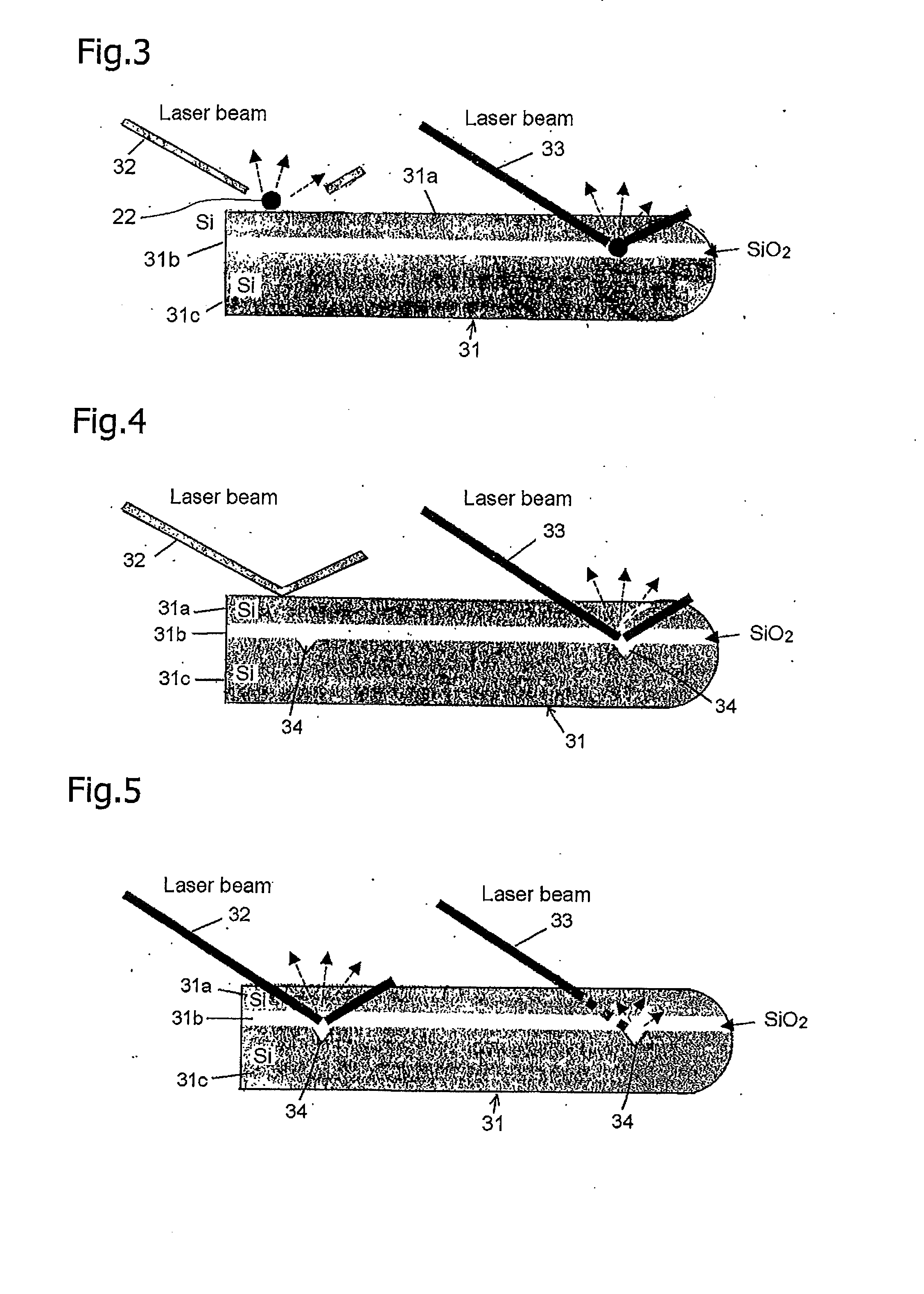Surface inspecting method and device
a surface inspection and inspection method technology, applied in the direction of optical radiation measurement, semiconductor/solid-state device testing/measurement, instruments, etc., can solve the problem that the influence of a wafer base material cannot be quantitatively measured and the calibration of soi wafers cannot be performed by the surface inspection of the conventional dual-wavelength method. achieve the effect of accurately measuring the inside of the body
- Summary
- Abstract
- Description
- Claims
- Application Information
AI Technical Summary
Benefits of technology
Problems solved by technology
Method used
Image
Examples
Embodiment Construction
[0088]The principle of a measurement method in a preferable example of the present invention will be described.
[0089]Relationship between depth and wavelength where incident light intensity becomes 1 / e2 (approximately 13%) in Si by each wavelength is as shown in the graph of FIG. 1.
[0090]As it is clear from FIG. 1, in a region between wavelength of the ultraviolet region (particularly, deep ultraviolet region) and wavelength of the visible region, transmitting distance in Si drastically changes so as to be different by 10 times or more. Therefore, in the case of detecting by irradiating the light having a wavelength in the ultraviolet region, it only detects foreign particles or COP on approximate surface, whereas it is irradiated deep inside the wafer when light having a wavelength in the visible region is used. For this reason, detection of film constitution (multiple structure) inside the wafer, which is COP (COP having the largest number and most characteristic) on the boundary ...
PUM
 Login to View More
Login to View More Abstract
Description
Claims
Application Information
 Login to View More
Login to View More - R&D
- Intellectual Property
- Life Sciences
- Materials
- Tech Scout
- Unparalleled Data Quality
- Higher Quality Content
- 60% Fewer Hallucinations
Browse by: Latest US Patents, China's latest patents, Technical Efficacy Thesaurus, Application Domain, Technology Topic, Popular Technical Reports.
© 2025 PatSnap. All rights reserved.Legal|Privacy policy|Modern Slavery Act Transparency Statement|Sitemap|About US| Contact US: help@patsnap.com



